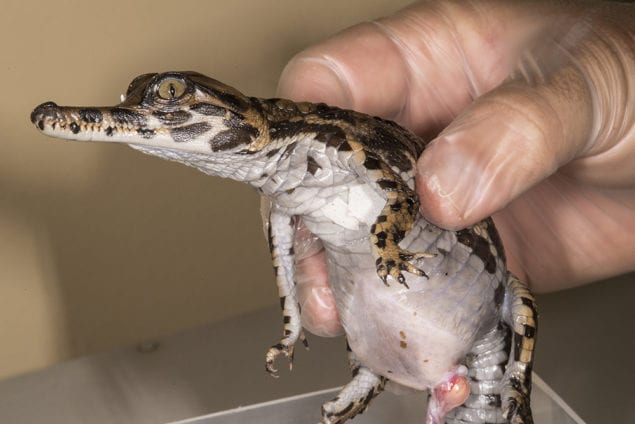
After an incubation period of 89 days at a temperature of 89 degrees, a false gavial, which is a very unique type of crocodile from Indonesia and Malaysia, has successfully hatched at Zoo Miami.
This is the first successful hatching of this species at the zoo in more than 25 years. The baby hatched on Sept. 1 and was one of two hatchlings that emerged from a clutch of 25 eggs. Unfortunately, the second hatchling did not survive. The parents are a 45-year-old male named “Lockjaw” who is on breeding loan and arrived at the zoo in 2000 and a 31-year-old female named “Nessi” who returned to the zoo in 2010 after being out on breeding loan to another institution. Lockjaw is the largest crocodile at the zoo at 14 feet long while Nessi is a bit smaller at nine feet long. Very little is known about false gavials due to their numbers being very low (less than 2,500) in the wild. They are considered endangered and are threatened by habitat destruction, overfishing of food sources and to a limited extent, the skin trade. Males can grow to 16 feet and females are smaller with a maximum length of closer to 10 feet.
They are opportunistic feeders and their diet consists mostly of fish, crustaceans, insects and a variety of mammals. They are found in freshwater swamps, rivers, lakes and ponds and are distinguished by their very long and slender snouts with approximately 80 sharp pointed teeth. There has been only one documented account of a false gavial attacking a man and they are generally not considered dangerous to humans.






